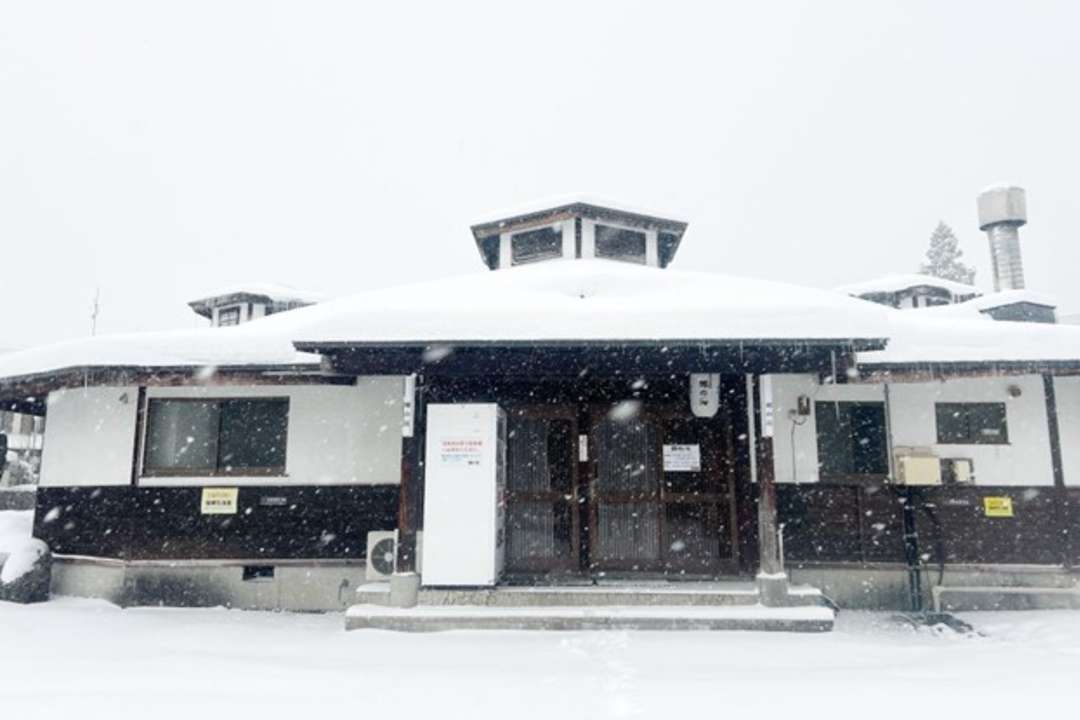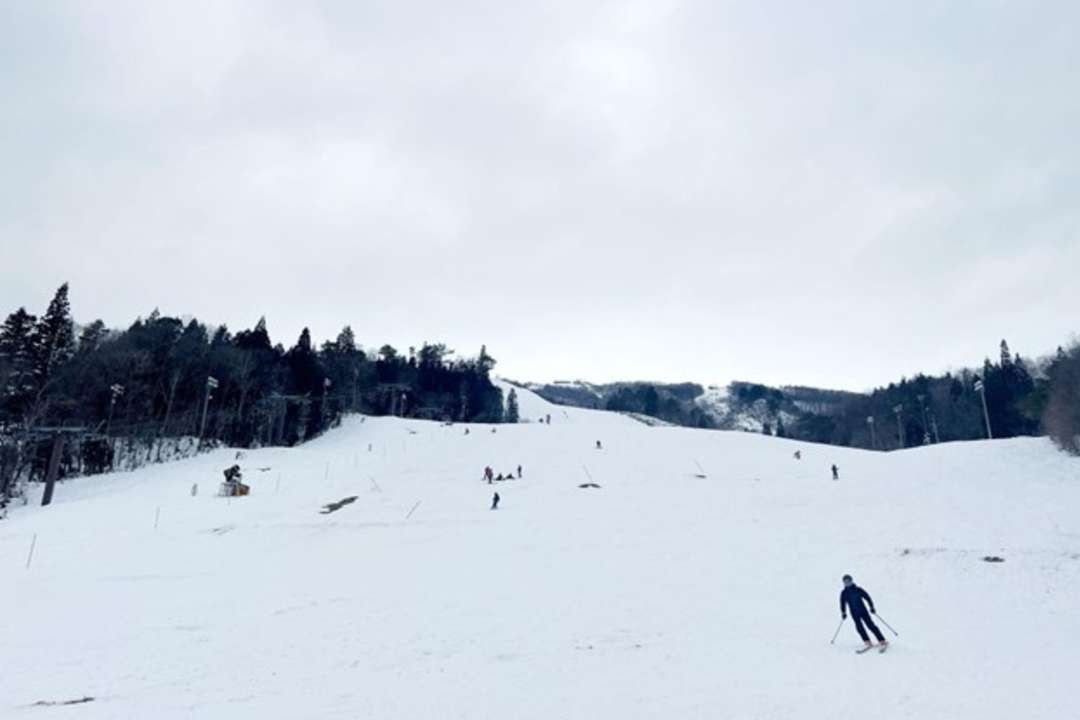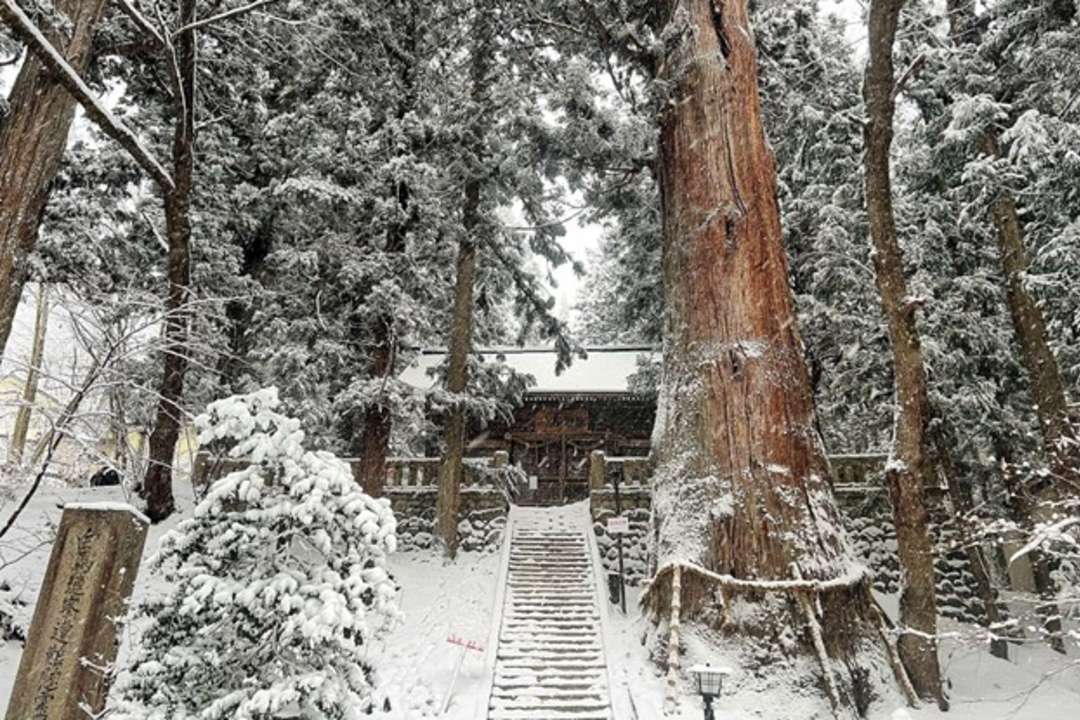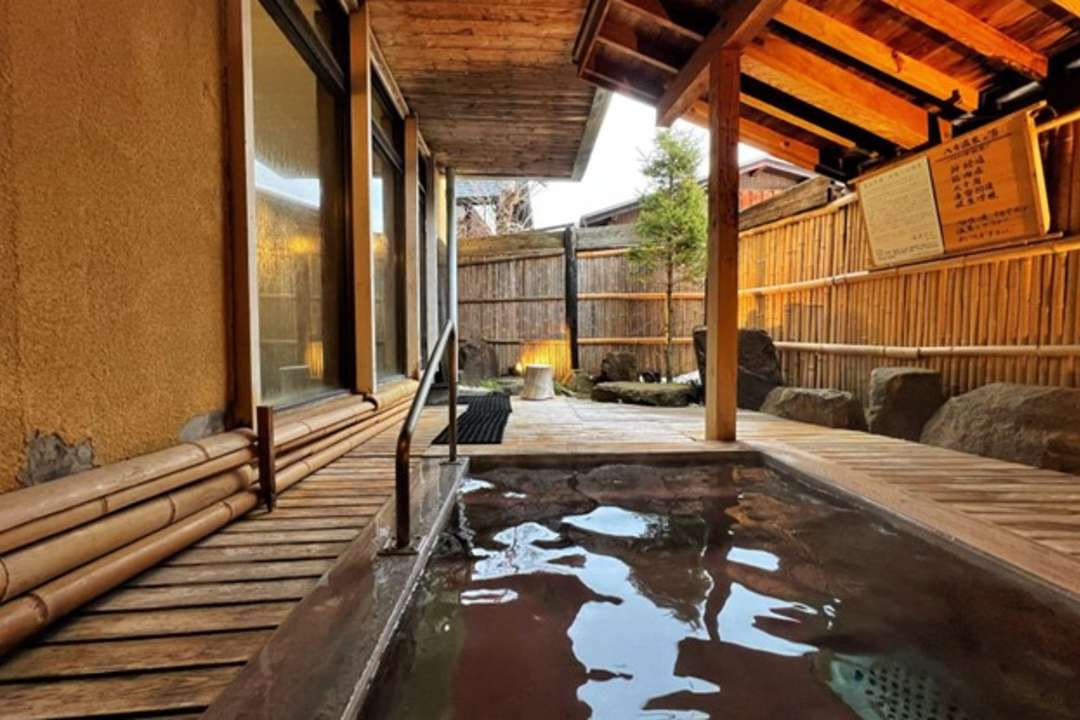
Renowned throughout Japan for its impressive mountain ranges and abundance of pristine snowy tracks available for winter sports (it was the site of the 1998 Winter Olympics), Hakuba has always been a popular weekend destination for those looking to escape the hustle and bustle of Tokyo to get lost in nature, whether it be to experience the wondrous snowfall or go hiking across mountain ranges in the green season.
However, what many don’t realise is that the mountains of Hakuba Happo-One is home to the purest onsen waters of Japan with an incredibly high pH of 11.2 and in which dissolved hydrogen has been discovered. This rarity occurs due to the unique geological placement of Japan’s islands, which fall across a major fault called the Fossa Magna dividing the islands into Northeastern Japan & Southwestern Japan. Due to this placement, large areas of exposed Serpentinite Rock have been discovered which when mingled with the natural hot spring has produced this rare pure onsen water. Luckily, one can enjoy the healing and relaxing benefits of the Hakuba Happo Onsen at three local tattoo friendly public onsen throughout the village.
RELAX IN THE LARGE ONSEN BATHS OF HAPPO NO YU

A short walk from the Happo-One Bus Terminal, is the popular Happo no Yu, where one can spend a relaxing time soaking in the large indoor hinoki bath or feeling the breeze against one’s skin in its semi-outdoor rotenburo which has views of the stunning mountain ranges of Hakuba.
Happo no Yu also has a relaxation area where one can enjoy simple Japanese meals & drinks after soaking. Like any public onsen, you can bring their own towels, or rent/purchase towels at the entrance. For your convenience, Happo no Yu and Mimizuku no Yu actually allow cashless payments (credit card, suica, paypay etc all accepted); which is perfect if you don’t have smaller notes or change.
If you’re short on time you can also enjoy outside Happo no Yu, one of the town’s three free onsen footbaths (ashiyu); Nagomi no Yu (located in the parking lot).

WATCH THE SNOW FALLING IN MIMIZUKU NO YU’S ROTENBURO

Named after the local owls (Mimizuku) found in the area, Mimizuku no Yu is located within walking distance from the Snow Peak Land Station building (designed by Kengo Kuma) which features a StarBucks and a restaurant.
Similar to Happo no Yu, Mimizuku has both an indoor and outdoor onsen to enjoy however Mimizuku’s outdoor rotenburo is more open, allowing one to enjoy the surroundings much more, whether it be watching the snow flutter down gently on a snowy day or enjoy the resting snow and stunning view of the mountains on a winter bluebird day. There is a smaller rest area available indoors, with simple vending machine drinks available.

EXPERIENCE A TRADITIONAL ONSEN AT SATO NO YU

In the heart of Hakuba Village lies Sato no Yu, a Japanese indoor onsen, where one can enjoy soaking in a very nostalgic, traditional hexagonal onsen bath, with the steam rising all around casting misty clouds across the dark wooden interior and stone floors.
Sato no Yu onsen waters are not circulated, due to its proximity to the original onsen source, the onsen water is constantly streamed in and then out of the bath. Henceforth there’s always “new” onsen coming in at any time, making it one of the only places where you can truly experience the ‘pure’ onsen waters of Hakuba Happo.
To visit Sato no Yu, make sure you have smaller denominations of Japanese coins and notes available, there is no cashless payment.

GLIDE DOWN THE ICONIC SLOPES OF HAPPO-ONE MOUNTAIN

Besides visiting all the village’s onsen, one can spend this getaway in the mountains gliding down the slopes of Hakuba Happo-One whether it be snowboarding, skiing or even trying the ski jump!
Due to its great location of mountain ranges, one can also visit other neighbouring mountains to enjoy winter sports (or hiking in summer) such as Hakuba Goryu, Hakuba 47, Iwatake and many more. The entire area has a great shuttle bus system for guests to enjoy travelling between the mountains easily.
VISIT PICTURESQUE SHIMOFURIMIYA HOSONOSUWA SHRINE

Hakuba Village’s local shrine is definitely worth a visit during your trip. Right in the centre of the village, this has to be one of the most picturesque winter shrine-scapes to experience, with its first torii gates starting in the village centre. Walk slightly further, pass a second torii gate and suddenly you’ll climb some steps and cross a little stone bridge where it feels you have entered a snowy world of Studio Ghibli’s Spirited Away.
There is no fancy ema, or omiyage to buy, it just simply exists almost otherworldly.
During the Autumn Equinox (September 23), the Hosonosuwa Autumn Festival is celebrated where a stone omikoshi bearing a 370kg Serpentinite rock is carried around both Happo and Happoguchi districts heading towards the main shrine to express gratitude to the mountain gods for their rich blessings.

STAY IN ONE OF HAKUBA’S FIRST TRADITIONAL MINSHUKU

An interesting fact of Japanese history is that Hakuba was where Minshuku (family run Japanese style inns; essentially Japan Bed & Breakfasts) came into being. In 1937, due to the popularity of the Hakuba mountain ranges being climbed by hikers, sixteen houses were formally given permission to provide official lodging for travellers at a rate of 80 sen (the official unit of currency at that time). In 1960, this grew to three hundred private lodges in Hakuba Village with the ability to provide accommodation for 13,000 guests.
Hotel Taigakukan is one of the first ever Minshuku in all of Japan, having been established in 1933 and still being run by the same family for multiple generations. Cozy and welcoming, its warm wooden interiors are reminiscent of a European mountain chalet with sweet Japanese/Western style rooms with tatami floorings and a lovely small outdoor hinoki rotenburo to enjoy after a day exploring.

Read about Lia's explorations of Niigata Prefecture's Echigo Yuzawa here! Follow Lia as she explores more areas of Japan intimately, over on her IG @ryokanwanderings or have a read of her blog: Ryokan Wanderings for even more stories and adventures.
 |
Lia is an Aussie based in Tokyo, Japan with a passion for exploring the lesser known, and learning people’s life stories. She loves to seek out ryokan traditional accomodation with private onsen hot spring baths (which she shares on Ryokan Wanderings), discovering hidden sushi omakase gems or curled up in her Totoro bed with a good book. If not travelling in Japan or abroad, her days are spent in her studio, Tokyo Kaleidoscope, reconstructing vintage Japanese silk kimonos into bespoke pieces for herself and others. |


























































